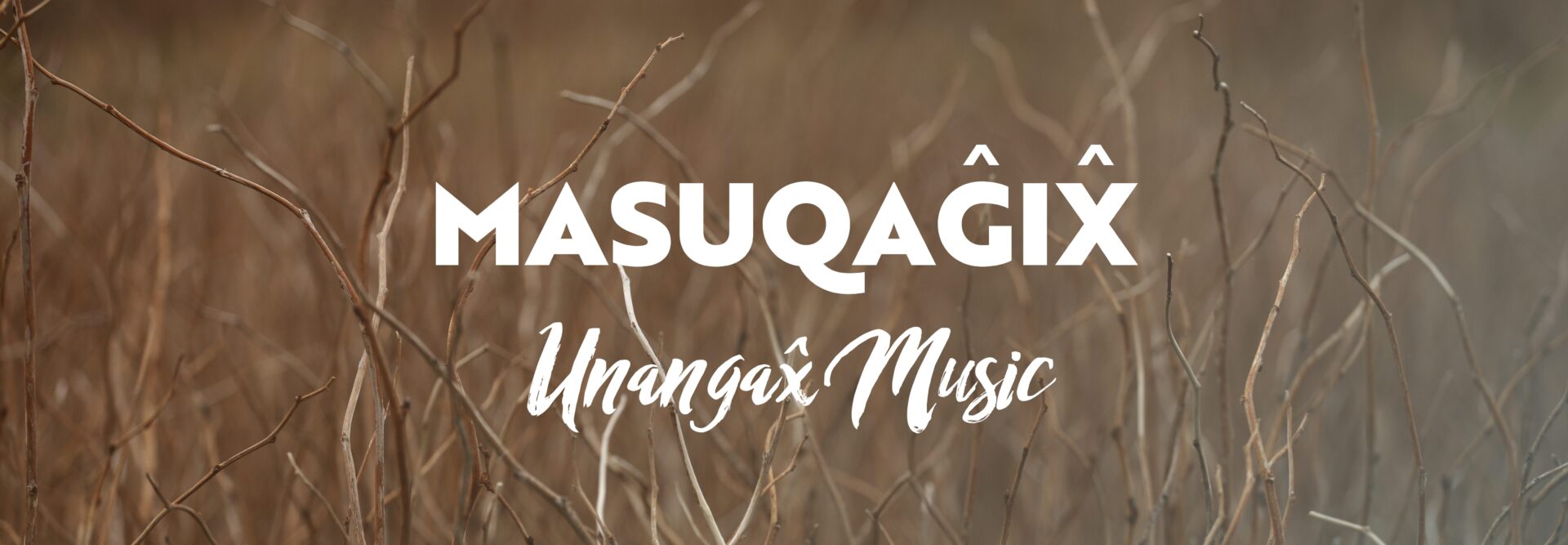

The Story of George
In the community of St. Paul Island, Alaska, music has served as a core element of Unangax̂ identity for generations. Nestled into the Bering Sea, St. Paul sits roughly 240 miles from the Aleutian Chain and about 47 miles north of St. George Island. The shores of St. Paul are often buffeted by the feral winds and syrupy fog that are characteristic to Unangax̂ lands.
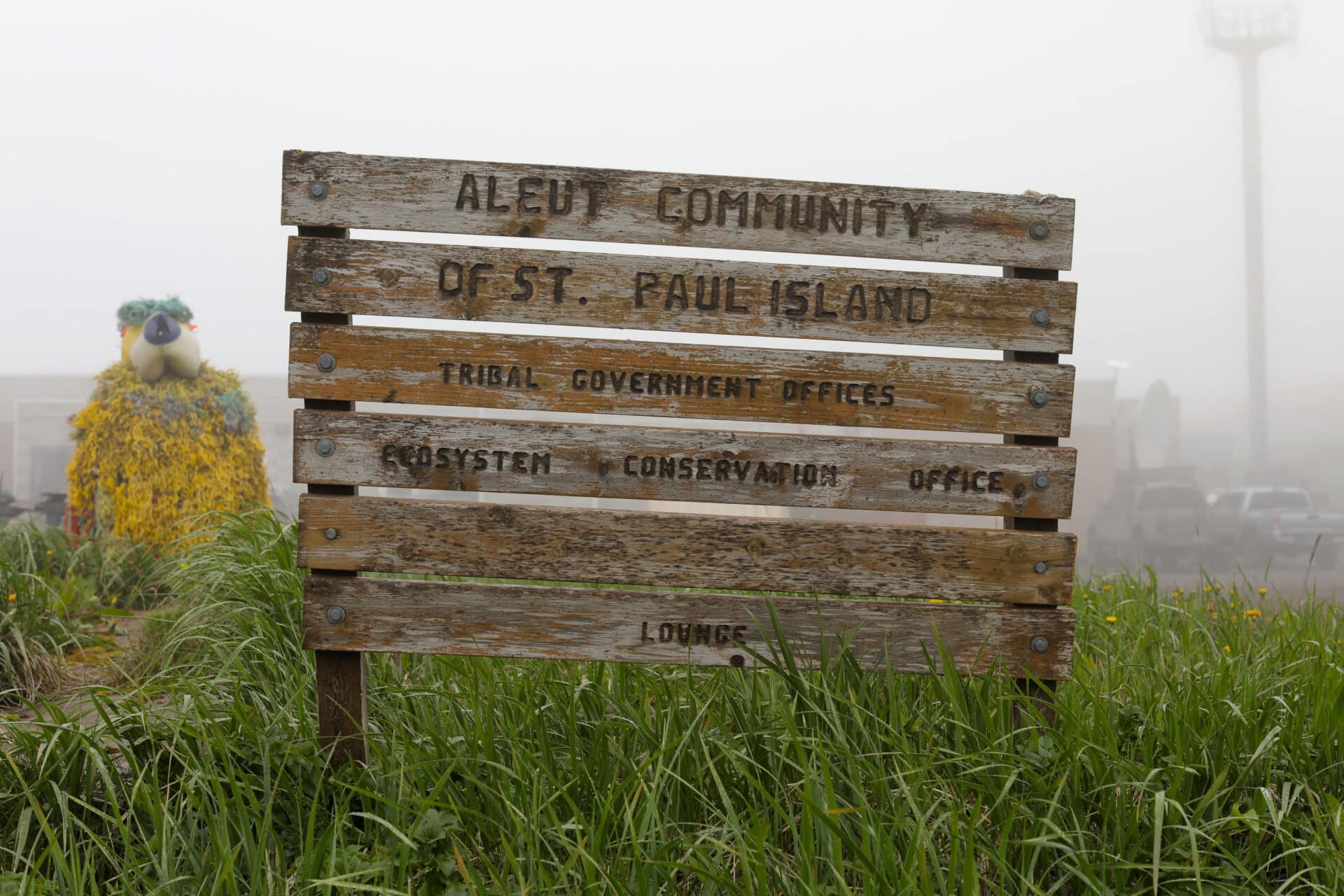
George Pletnikoff, Jr.’s roots run deep on the island, where his parents, George Pletnikoff, Sr. and Leonella Fratis, are both from. Growing up, George spent time in St. Paul, Unalaska, and Palmer, but his early encounters with Unangax̂ dance in Unalaska laid a strong foundation for his enduring connection to music.
At just 8 years old George was introduced to Unalaska Unangax̂ Dancers by Andrew Yatchmenoff, a fellow dancer. “I felt safe there and connected with our ancestors and our community,” George recalled, a connection that would last until he moved away at age 13.

George’s path led him back to St. Paul in 2016, driven by his work in Unangam Tunuu revitalization with Aqualina Lestenkof. Though it had been years since he last danced to the sounds of Unangam Tunuu, amid his daily immersion in our language George found himself called to join Unaaĝim Ax̂asnikangin, the St. Paul Unangax̂ dance group.

“I had been feeling a void in my life, and the revitalization of language and singing the songs of our ancestors spoke to me on a deeper level,” George said. “It awakened something within me, and I couldn’t ignore the call.”
“It felt like a return back and a strengthening of my identity with where I come from.”
For George, “music is more than art, it is a form of human expression that I cannot explain with words.” And being a part of Unaaĝim Ax̂asnikangin has held immense significance for George, enabling him to express himself in ways he had long gone without. “It felt like a returning back and a strengthening of my identity with where I come from,” he shared.
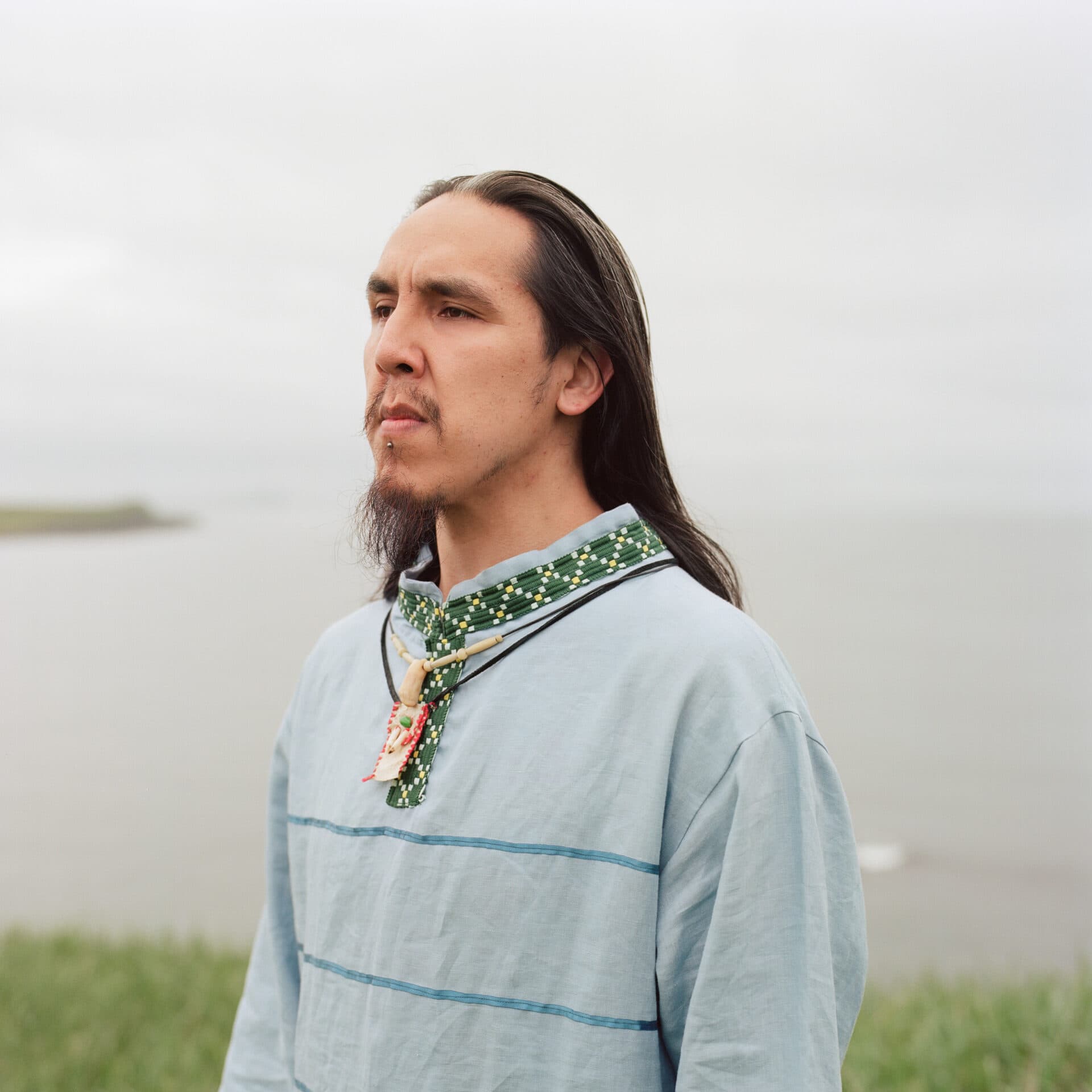
When George first joined Unaaĝim Ax̂asnikangin, he found that there were many members from earlier generations but only a few from his own. He nevertheless viewed it as an opportunity to bridge generations and share our Unangax̂ traditions with our youth.
“The dance group fills a crucial gap,” George explained. “It’s a means to pass down our traditions and make them relevant to our lives today. We are revitalizing and engaging with our culture through dance, making it traditional again.”
The connection between traditional subsistence living and music is evident in many Unaaĝim Ax̂asnikangin performances; some reflect on or explain roles for community events like the Fur Seal Harvest, a traditional part of life on the Pribilofs, some share words of resilience while depicting the soundscape of the land, and some use Unangam Tunuu gifted by respected Elders to tell stories that are protected by the community.
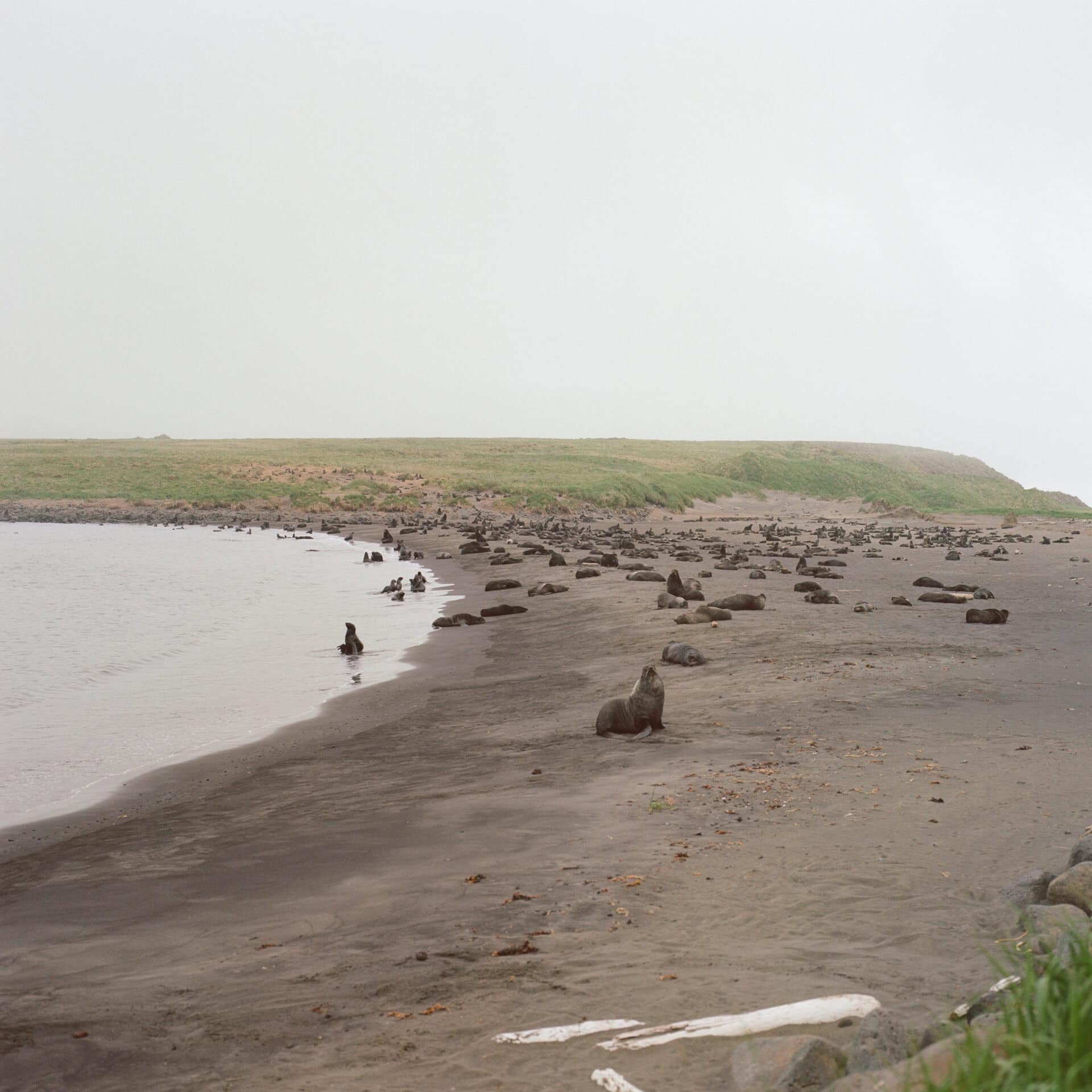
“As I’ve become more immersed in subsistence and dance, I’ve understood the deeper connections between them,” George shared. “They both reflect our way of life, our relationship with nature, and our values as a people.”
As a multifaceted performer within the St. Paul dance group, Unaaĝim Ax̂asnikangin, George’s roles as a drummer, dancer, and singer each lend a unique dimension to the stories the group shares. Learning them though, takes time.
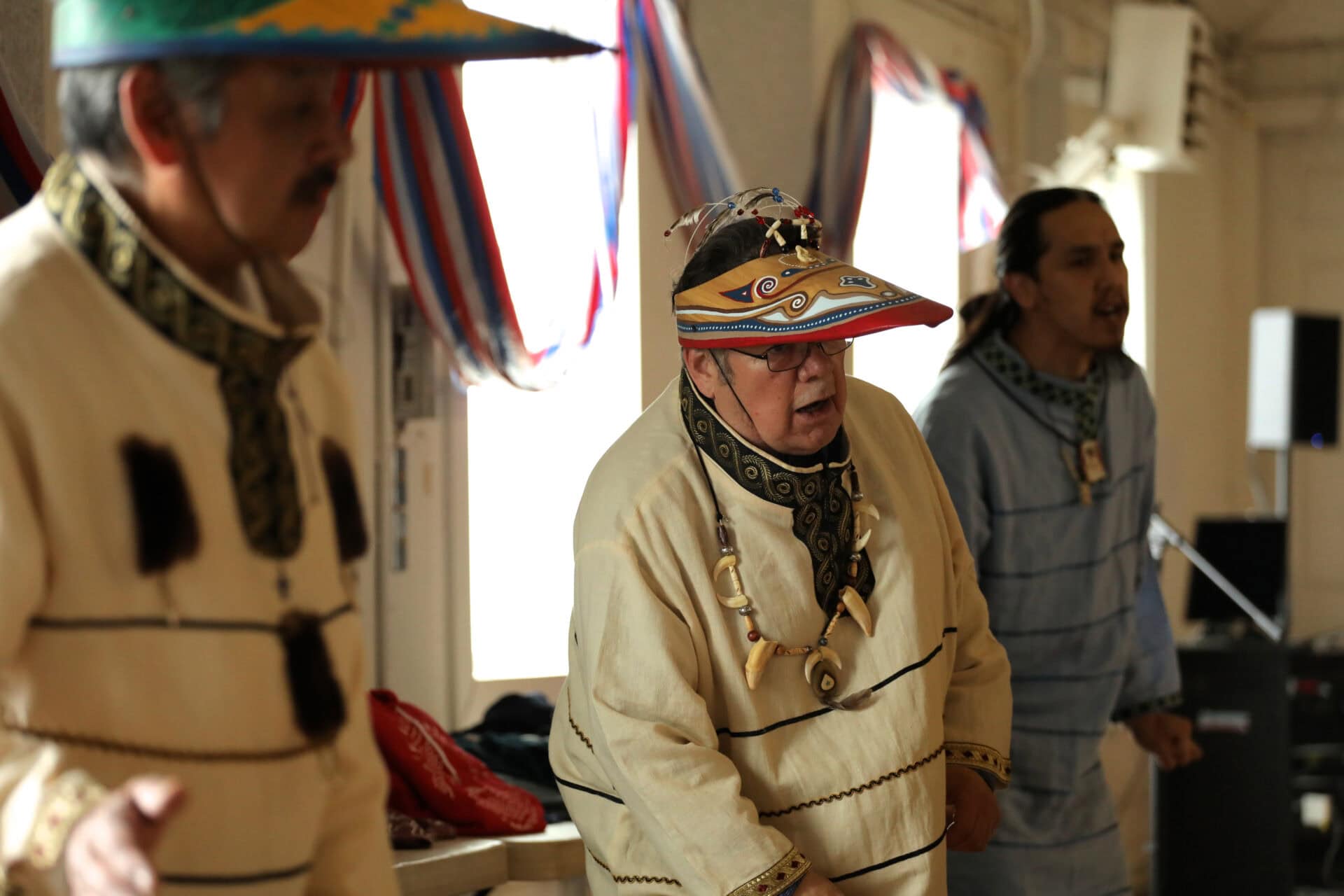
“First,” George explains, “it is just learning the dances, the cadence. You have to get a good understanding of what each element represents so you aren’t just following the steps.”
Over time, George has grown more comfortable with each element of the music, finding ways to infuse individual expression while maintaining coordination with the group. “Within coordination,” he adds, “we all have our own different ways of moving even when we are moving together as one.” But this didn’t come easily to George. “Just over the last year or two,” he said, “I have started feeling like I can let myself express my own perspective of it, so to speak.”
Looking ahead, George aspires to pass down traditional Unaaĝim Ax̂asnikangin songs and dances while also while encouraging creativity and expression among the younger generation. He envisions a future where Unangax̂ musicians come together to celebrate all kinds of music, bridging contemporary and traditional forms.
“We are creators,” George stated with conviction. “As we teach the next generation, we want them to feel free to share their own stories through music. We don’t just want to preserve our heritage; we want to evolve and create anew as well.”

George’s journey continues as he plays the guitar, sings with the church choir, and shares his musical talents with others. In his eyes, celebrating all kinds of music brings communities together, creating a space where Unangax̂ can flourish and foster stronger relationships.
“We all have our own different ways of moving, even when we are moving together as one.”
To aspiring musicians in their communities, George’s advice is simple yet profound: share what you feel and fearlessly celebrate being Unangax̂.
Within our Unangax̂ communities, whether it’s traditional or contemporary music, every form of expression has value.


